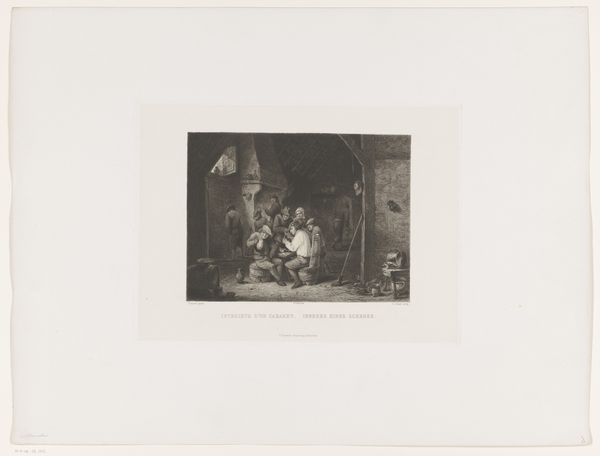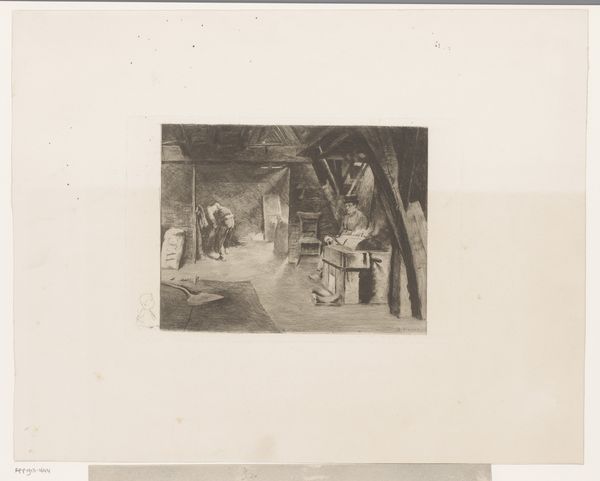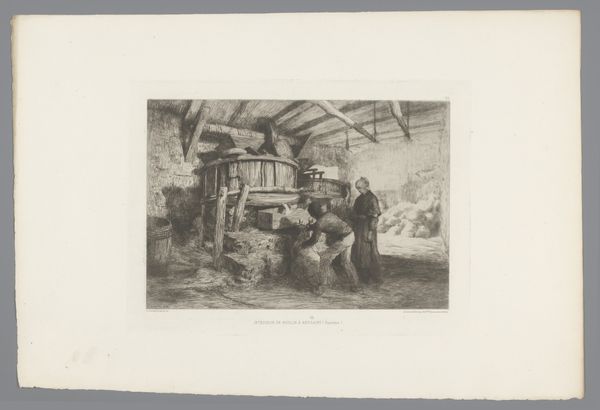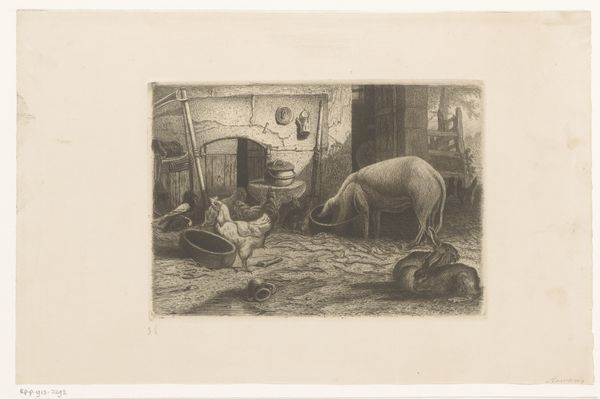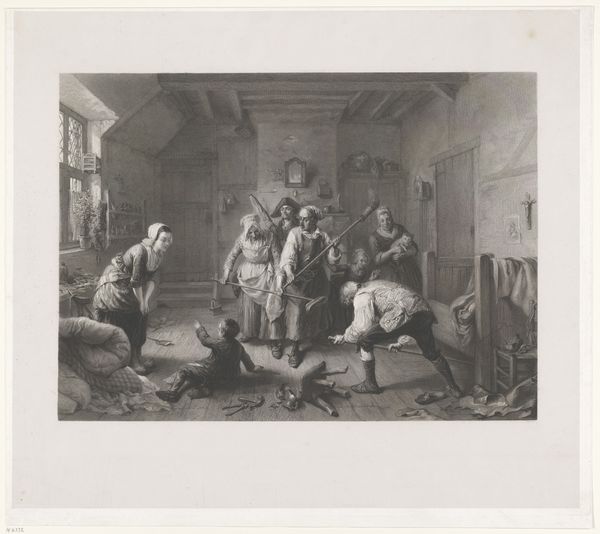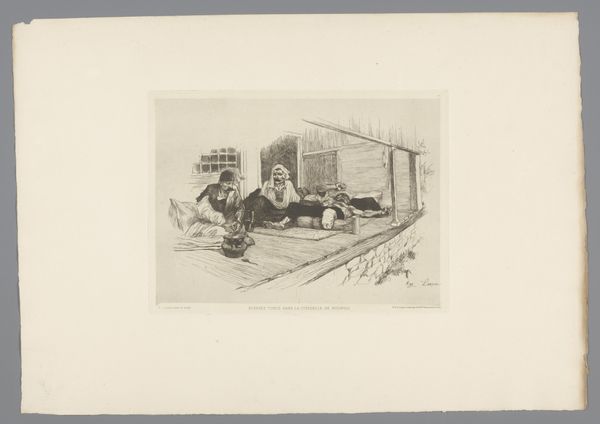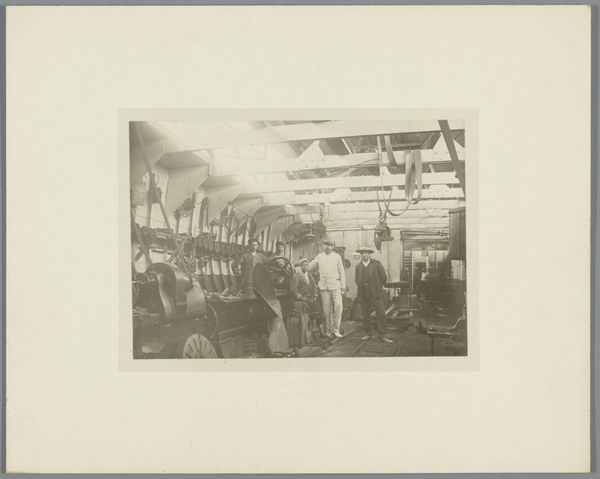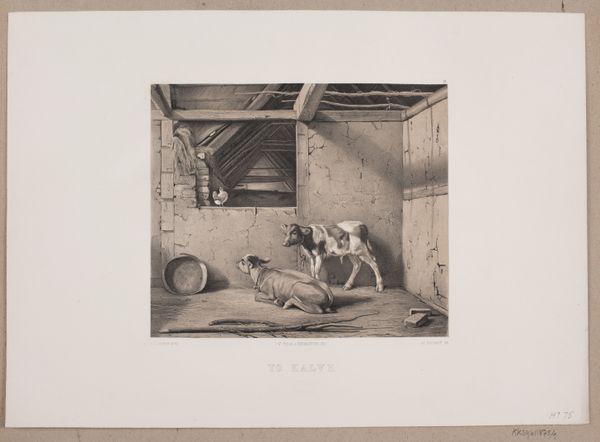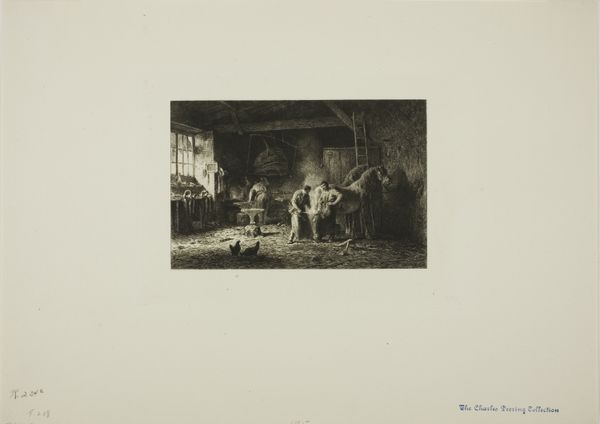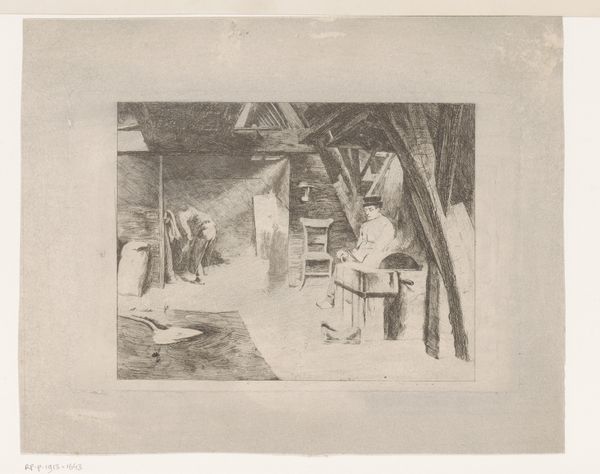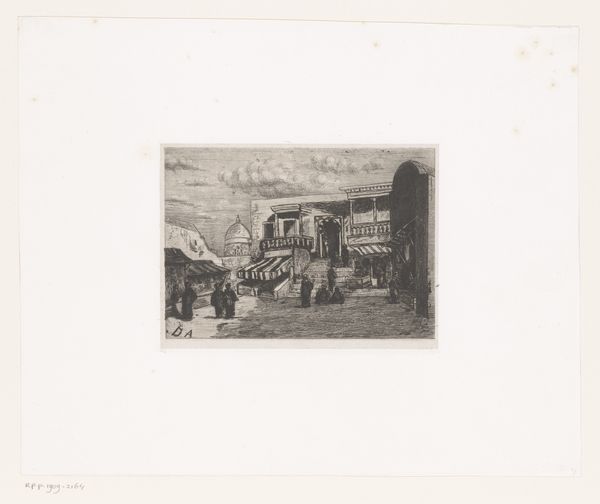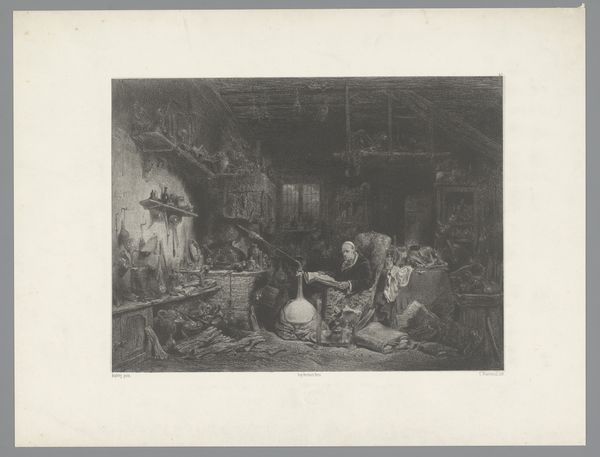
print, etching
#
dutch-golden-age
# print
#
etching
#
landscape
#
genre-painting
#
realism
Dimensions: 128 mm (height) x 236 mm (width) (plademaal)
Curator: This is "Køkkeninteriør," or "Kitchen Interior," an etching by Viggo Jastrau from 1885. Editor: The density of line work is immediately striking; it creates a deeply shadowed scene and I am drawn to the almost tangible textures it evokes. It feels raw, honest. Curator: Indeed. The manipulation of light and shadow, or chiaroscuro, guides the viewer’s eye. Notice how Jastrau uses varied densities of lines to delineate forms and suggest depth within the compressed space. Semiotically, it establishes a clear visual hierarchy. Editor: And materially, consider the etching process itself. The act of incising lines into the metal plate, the physicality of applying the acid, the careful layering of ink—it's a process that mirrors the laborious aspects of daily life depicted here. The roughness isn’t accidental. Curator: I concur, there’s a calculated tension. The figures are arranged deliberately to create compositional balance— the man in the hearth mirrored by the women further back— while the details contribute to the work's overall atmosphere. Editor: This resonates strongly with Dutch Golden Age painting through the rendering of humble interiors, bringing that period’s detailed realism to the print medium. The inclusion of domestic labor, spinning wool or tending to the fire, presents work through the domestic space itself. The materiality informs our understanding of lived experience. Curator: Precisely. It captures a certain social reality, while formally it is an exercise in manipulating graphic language. The strategic organization of line dictates the tonal qualities which convey, more than any social context, its mood. Editor: Considering this interior's historical location, the means of production of textile goods like wool, contrasted against manufactured objects like pots, would likely point to emerging class structures. The scale of craft, versus mass production... Curator: Regardless, the tension established through composition and line allows the image to linger in one’s mind. Editor: Indeed, reflecting on the image’s making opens it to further interpretative considerations of artmaking in a changing world.
Comments
No comments
Be the first to comment and join the conversation on the ultimate creative platform.
